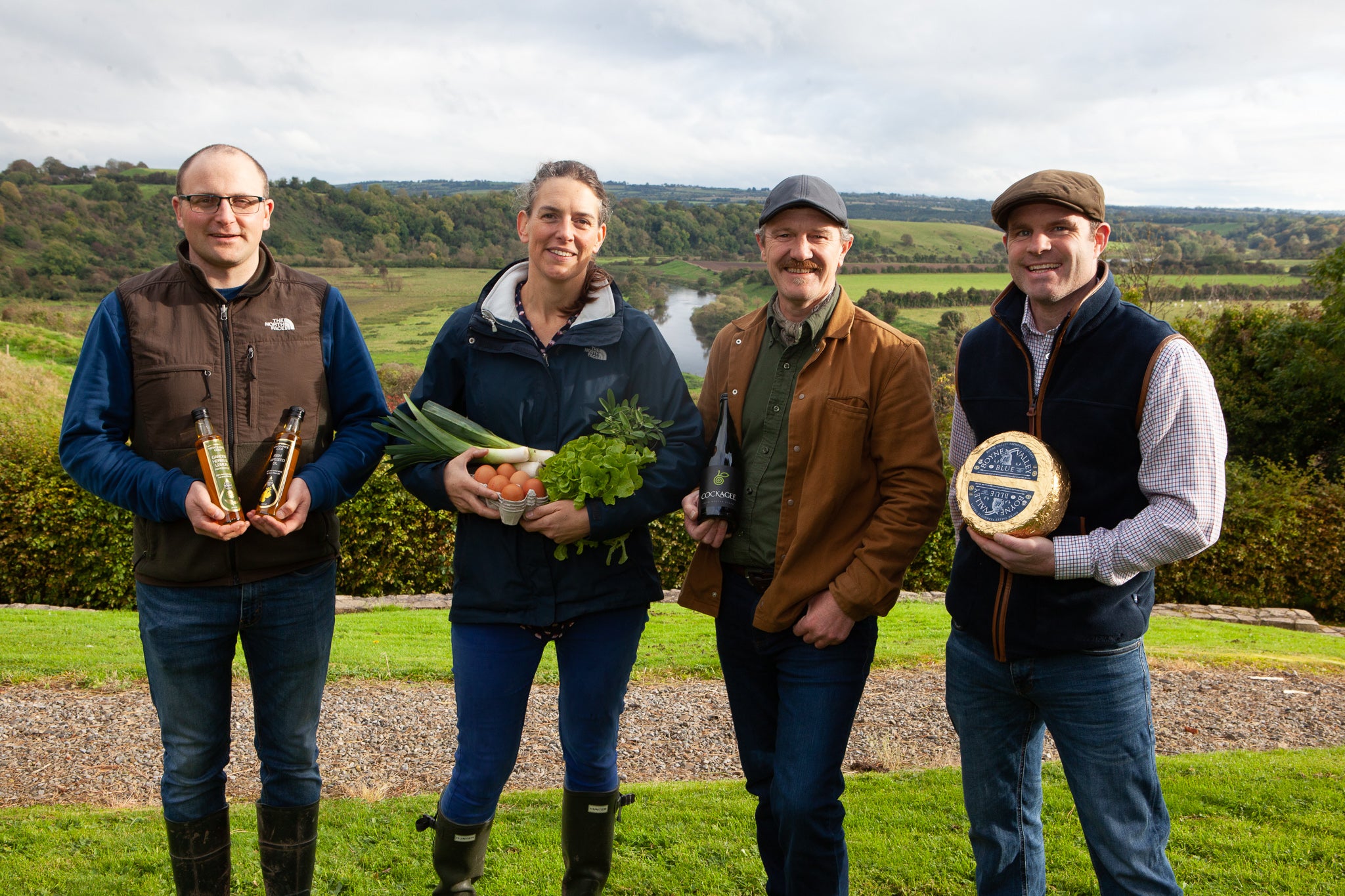Why Ireland should be your next foodie holiday
Ronan O’Shea was reared on Tayto’s crisps on his annual family visit to Ireland. Could he love its modern cuisine?

Across Carlingford Lough, between counties Louth and Down, fog blankets the Mourne Mountains like cotton wool.
The water is calm despite rain, and with our attention focused on the granite mountains, it’s a while before we notice the road signs have shifted from kilometres to miles.
During my annual pilgrimage to Ireland as a child, cuisine was Tayto’s crisps, Jacob’s Afternoon Tea biscuit selection, Galtee Cheese, Hartley’s Jelly and home-made barmbrack. I loved my grandmother. My dentist did too.
Now, I’m beginning to appreciate Irish food in all its glory, and I’m not alone.
“They use Carlingford Oysters in Dubai’s top restaurants,” says Billy, our guide, as we drive along the Newry Road, a couple of nights on from when we first arrived in Dublin, the morning after a meal at Ghan House, a revived Georgian property that specialises in local flavours.

It’s during our Fab Food Trails tour of the capital, however, where I first learn about how Ireland’s food scene has developed over the years.
Our guide, Eveleen, says that the Seventies brought a swathe of visitors (some who settled) to the country, heralding a growing awareness of the sheer quality of Ireland’s land and soil, something previously taken for granted. Television chef Darina Allen, who runs Ballymaloe Cookery school, agrees. “In 1964, when Ballymaloe House started, you could easily count the number of good restaurants in Ireland on two hands, and possibly have a couple of fingers left over.”
It was her mother-in-law, the pioneering Myrtle Allen (co-owner of Cork restaurant The Yeats Room) who helped shake things up.
“She was aware of the quality of produce we had in Ireland, at a time when we had an inferiority complex.”
“To write a menu every day depending on food you had in the garden was considered amateurish,” she adds, in stark contrast with today, when chefs revel in producing dishes made from local, seasonal produce.
Walking around Dublin, we’re told of a growing confidence among Irish chefs in the Nineties, and a wider appreciation of what Ireland has to offer, such as its “mountain lamb, dairy and grass-fed cows”.
The economic boom, alongside the growth of Ryanair and the first wave of mass immigration to the country, helped shape a developing food and drink scene in Dublin, its influences obvious today: from domestic cheese at Sheridan’s to French-inspired charcuterie meats at Loose Canon.

But it’s not just Dublin where food is impressive, with farms further afield leading the way. In Meath, an hour north-west, we meet Carina Conyngham at Rock Farm in Slane, a member of the Slane Food Circle.
She highlights a growing demand for quality, organic produce, among both relative newcomers from Eastern Europe and those with rural roots keen to return to farmland traditions.
Visitors on the Circle’s tour can try cheese, oils and cider made with local produce, and learn more about how farms in the region are working together. On the farm itself, Tamworth pigs scuttle around munching on grass, inspecting the pumpkin slices I toss their way, before we head indoors to try keeved cider, a sweetened sparkling version of the original.
Diners may have once associated Italian or French cooking with quality, but it’s clear a growing awareness of the quality of Irish produce has taken root.
Onto Carlingford, famous for its world-class oysters, for that evening meal, before making our way up and down the hilly roads of County Down, to Strangford Lough and Tracey’s Farmhouse Kitchen. Here, we pop in for a lesson in breadmaking, creating our own soda and wheaten loaves.

Yeast-free, the bread was traditionally cooked in a cast-iron griddle over an open fire, but we use a more modern, electric equivalent, watching the porridge-like farls (quarters) rise, before drinking tea over butter-slathered sweet and savoury breads.
It’s a cosy experience, and a world away from the buzz and life of Belfast, where a cocktail-making class is followed by another foodie excursion; Taste and Tour’s 5 Stop Brunch, which is so popular there’s a waiting list for June.
“I’m going to give you a Bloody Mary with gin in it because I like Bloody Mary with gin in it,” says Phil, our host, showing us around Belfast’s zippy Cathedral Quarter.
“A decade ago there weren't many reasons to visit the Quarter,” he says, as we walk off a local cafe’s interpretation of the legendary Ulster Fry. “But now it’s jam-packed at weekends.”

From a chic rooftop bar to the 19th century St George’s Market, the mix of old and new is clear, from stalls selling Middle Eastern wraps to those dolling out Irish cheese and black pudding.
“Ten years ago there were a handful of excellent restaurants and bars,” says Phil. “But Belfast has developed a genuinely thriving food and drink scene now.”
It would seem food and drink in Ireland is changing at breakneck speed, with consumers and producers looking to old traditions so as to carve out something refreshing and new. I, for one, welcome it. But I’m not giving up Tayto’s crisps though.
Travel essentials
For more information on visiting Ireland, visit ireland.com.
Join our commenting forum
Join thought-provoking conversations, follow other Independent readers and see their replies
2Comments